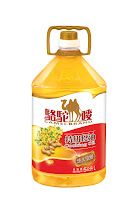For Higher achiever:
LIQUID CAPACITY LESSON PLAN:
Objectives:
1. The student will be able to change units in the customary system. Specifically, the student will convert units of liquid capacity including: cups, glasses, mililiter and liter.
2. The student will be able to convert from larger to smaller units and vice versa.
Materials:
Liquid Capacity Lesson
Containers in cup, glass, bottle, jar and liter size
One liter of apple juice and 10 paper cups
Liquid Capacity Worksheet
Procedure:
1. Induction set:
Bring in containers that are cup, glasses, bottle , jar and liter size. (Have an actual liter of apple juice) Ask students if they can identify the unit size of each container. Ask students what size containers they buy at the store and what liquid is normally contained in these containers.
2. Motivate the Lesson: Ask students how many cups of juice they believe they can pour from a liter of jar of an apple juice. Have students explain their reasoning. Pour the apple juice into cups to see how many cups are in one liter. (Let the students drink the apple juice.)
3. Explain that they could have calculated the number of cups of apple juice by using unit conversion. Ask the “Question of the Day”.
4. Proceed through the lesson examples and explain how to read the unit conversion chart.
5. Stress the importance of when to multiply and when to divide by having each student write down, verbally repeat, and use the rules in the provided examples.
6. Have students complete the Liquid Capacity Worksheet for homework.
Liquid Capacity Lesson
Lesson excerpt - Let’s figure out which answer choice is correct by learning about measurement unit conversion. Liters and mililiters sare type of measurement units. We need ten cups of apple juice. Unfortunately, the grocery store doesn’t have apple juice in cup size. How can we figure out how many cups are in one liter? We can “convert” between these measurement units and cups. “Convert” means to change from one unit of measure to another, such as cups to liter and vice versa. First, we need to know how many cups are in one liter and how many glass are in one liter.
For Lower Achiever
Measuring Volume
1.Measure volumes of liquid using standard unit.
2.Use the vocabulary related to volume.
3.To make a perceptual comparison of capacity.
Teaching Aids:
Five types of containers.
Procedures:
1. Show the students some different kind of bottle, for example: a bottle of mineral water, cooking oil, a tin of coke, a bottle shampoo etc.
2. Ask them to find out the volume which stated on the bottle.
3. Introduce to them the standard measurements for volume of liquid.
1 litre = 1000 millilitres
1 l = 1000 ml
4. Show them the measuring cylinder. Pour water into the measuring cylinder till 1 litre.
6. Ask them to repeat it in others measuring cylinder.
10. Divide the worksheet and ask student to complete it.
Conclusion
As teachers we need to recognize that students come to us with all kinds of learning styles. Therefore the learning environment needs to be rich and varied to meet the different learning styles of all the students. Learning is a very complex process. For the majority of us, it requires doing an activity, discussing the outcome, and establishing relationships among the different components. As an educator, I have the opportunity to implement effective, learner-based teaching strategies that develop from the research on how a student best learns. And more importantly, we should generate an atmosphere in which the student is motivated to want to learn more. This kind of learning can occur when students are provided with experiences that acknowledge and directly challenge students misconception.









